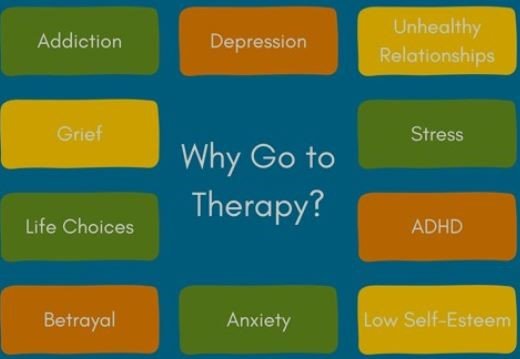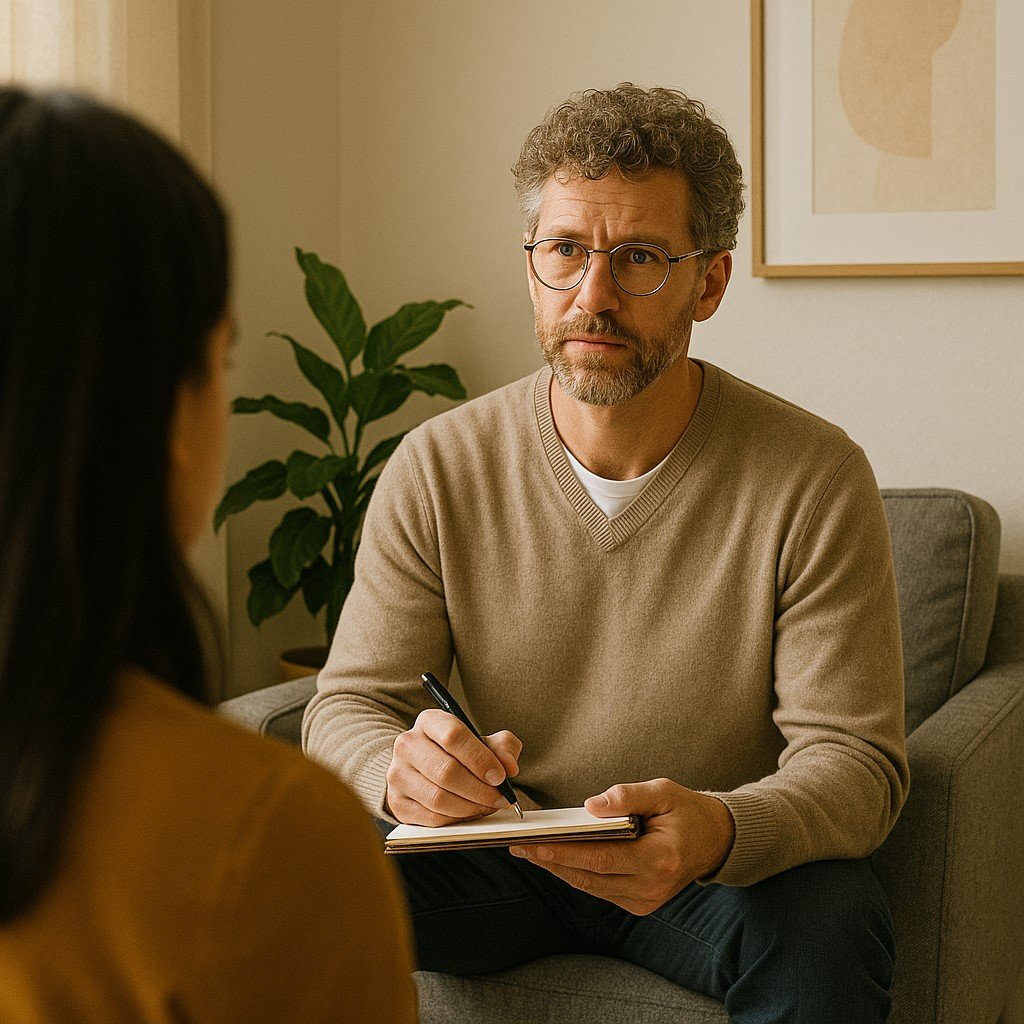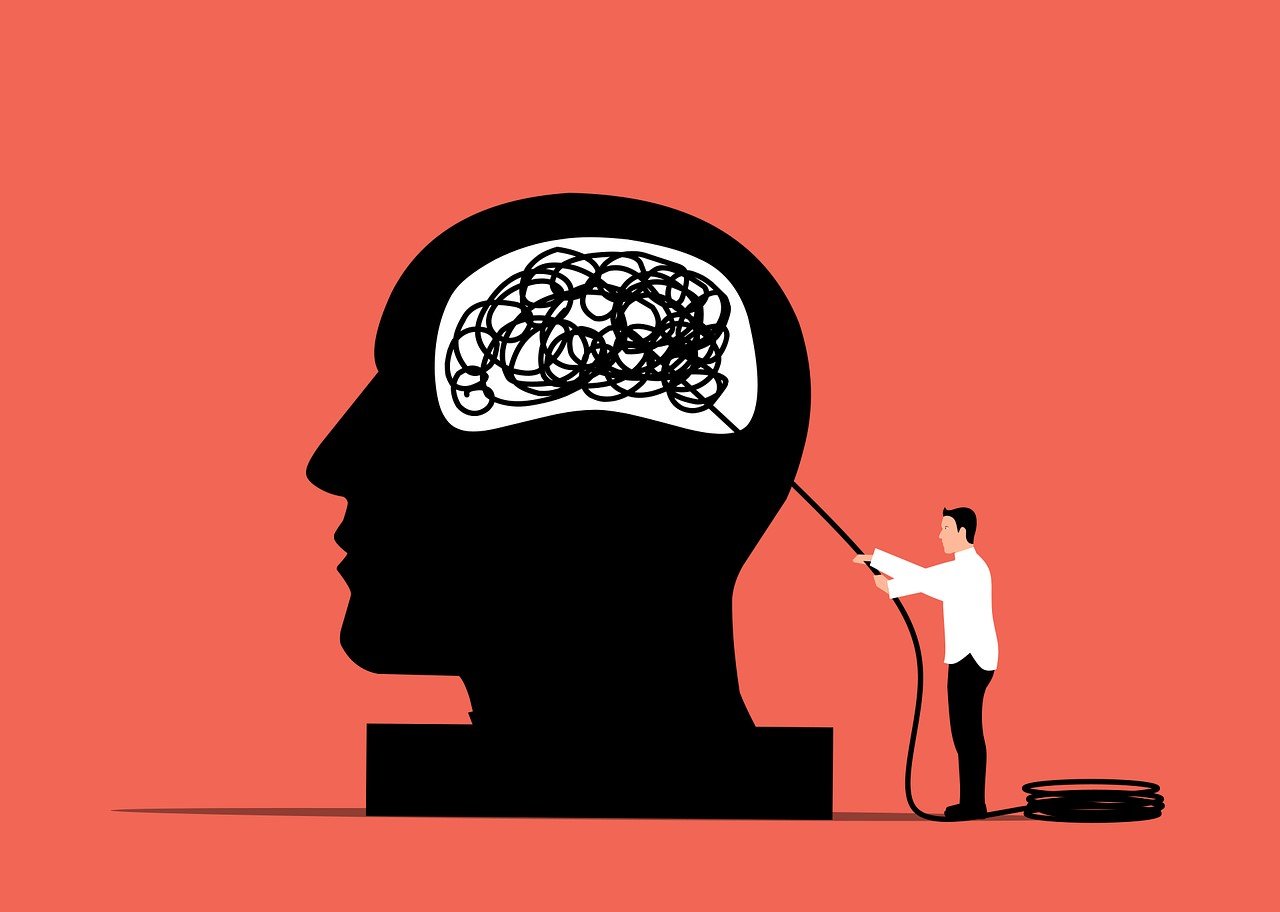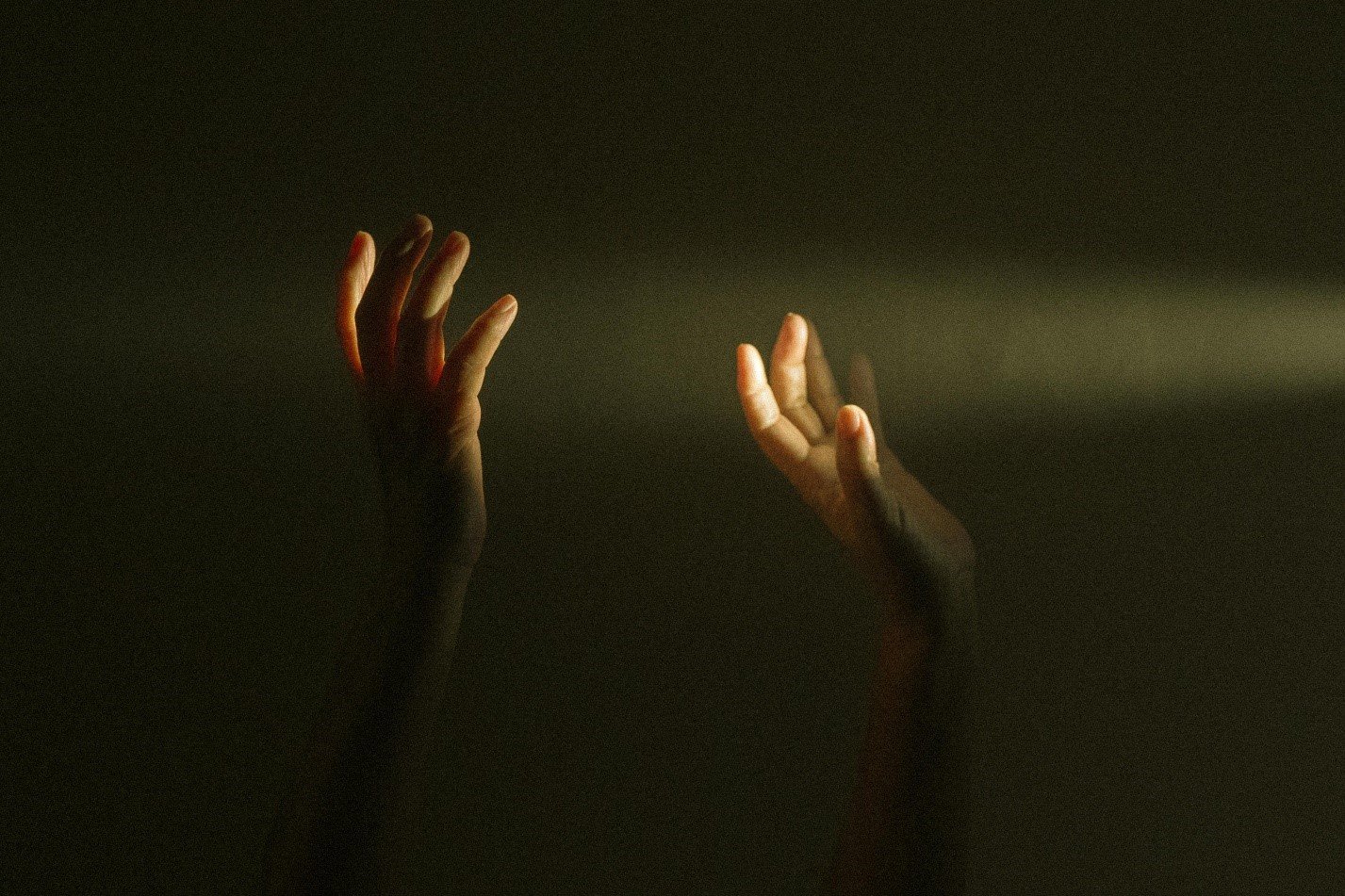Why do people need therapy?
Why do people need therapy?
Many people imagine therapy as a last resort—a place you turn to when everything is falling apart. And yes, therapy can be life-saving in moments of crisis.
But the truth is, most people who come to therapy aren’t broken. They’re simply human.
They may be holding it all together on the outside: a stable job, a family, a packed schedule. But inside, they feel overwhelmed. Numb. Disconnected.
Life feels heavier than it should. Relationships feel strained. The same self-sabotaging patterns keep showing up, despite their best efforts.
And yet, they hesitate. They wonder:
- “Is this feeling serious enough to need therapy?”
- “What if I should be able to handle this on my own?”
- “Do I really deserve support when others have it worse?”
These are the kinds of questions that therapy welcomes. It creates space for your doubts, your pain, your story—no matter how big or small it may seem.
In this article, we’ll explore the real reasons people seek therapy, beyond the clinical terms and diagnoses. We’ll talk about emotional exhaustion, self-awareness, relationship patterns, and the quiet longing for change.
And maybe, just maybe, you’ll see yourself in some of these reflections—and know that you’re not alone.
Therapy isn’t about fixing what’s broken.
It’s about nurturing what’s human.
Common (and Often Hidden) Reasons People Start Therapy
You don’t need a diagnosis to need therapy.
In fact, many people seek help long before anything reaches a crisis point. These are the quiet, everyday struggles that pile up over time and slowly wear us down.
Here are some of the most common reasons people walk into a therapist’s office:
- Feeling stuck or lost
You might have checked all the boxes—career, relationships, goals—but still feel a sense of emptiness. Therapy helps unpack the “why” behind that feeling and find new meaning.
- Relationship patterns that don’t change
You keep choosing emotionally unavailable partners. You feel unseen in your marriage. You repeat the same arguments with family. Therapy gives you tools to recognize patterns and shift them.
- Burnout and emotional fatigue
Not just workplace stress—this is the deep exhaustion that comes from constantly taking care of others, never pausing for yourself. Therapy helps refill your emotional cup.
- Self-doubt and imposter syndrome
Many high-achievers quietly wrestle with a voice that says, “You’re not enough.” Therapy helps challenge that voice and build a stronger, more compassionate inner narrative.
- Grief, loss, or big life transitions
Sometimes it’s a death. Sometimes it’s a breakup, a move, or even becoming a parent. Change—whether joyful or painful—can shake your identity. Therapy helps you stay grounded through it.
You don’t have to wait until things fall apart.
Therapy is also for prevention, clarity, and growth.
How Do You Know It’s Time to Start Therapy?
It’s not always obvious.
You might be “functioning” just fine—going to work, keeping up with responsibilities—but feel
ike something is off.
Here are a few signs that it might be time to reach out:
- You feel emotionally overwhelmed more often than not.
Small things trigger big reactions, or your emotions feel like too much to hold alone.
- You notice patterns in your life that aren’t serving you.
Whether it’s in relationships, work, or how you treat yourself—if you’ve tried to change things but keep ending up in the same place, therapy can help break the cycle.
- You’ve gone through something hard, even if it “was a while ago.”
Trauma, grief, heartbreak—these experiences don’t follow a timeline. Therapy gives you a place to heal, no matter when it happened.
- You want a space that’s just yours.
Some people come to therapy not because something is “wrong,” but because they want a space where they can be fully themselves without judgment.
- People you trust are suggesting it.
Sometimes the people around you notice changes in your mood, energy, or stress level before you do. If loved ones have gently brought it up, it might be worth considering.
Starting therapy isn’t a sign of weakness.
It’s a powerful step toward knowing yourself more deeply—and caring for yourself more fully.

What Can Therapy Actually Help With?
Therapy isn’t just for crisis.
It can support you through all kinds of human experiences—big and small, clear or confusing.
Here are just a few things therapy can help you with:
- Managing anxiety, stress, and overwhelm
You’ll learn how to recognize what’s behind the stress and develop practical tools to navigate it without shutting down.
- Working through depression, numbness, or lack of motivation
Therapy gives you space to name what you’re feeling and gently rebuild energy and meaning in your life.
- Healing from trauma or painful life events
A therapist can help you process the past at your pace, making room for healing without pressure.
- Navigating relationships and boundaries
Whether it’s family, romantic, or work relationships—therapy can help you communicate more clearly and protect your emotional energy.
- Building self-esteem and confidence
Therapy helps you understand your inner critic and start relating to yourself with more kindness and clarity.
- Exploring identity and life transitions
From big questions like “Who am I?” to changes in career, family, or values—therapy provides support as you grow and redefine yourself.
Therapy doesn’t “fix” you.
You’re not broken.
What therapy does is help you feel more grounded, more seen, and more able to live with intention.
What Is the Process of Therapy Like?
Therapy isn’t a one-size-fits-all experience.
But most journeys tend to follow a general flow, with space to go at your pace.
Here’s what you can usually expect:
- The First Sessions – Getting to Know You
In the beginning, your therapist will ask about your story, what brings you in, and what you hope to get out of therapy.
You don’t need to have perfect answers. Just showing up with curiosity is enough.
- Building Safety and Trust
You and your therapist will start building a relationship.
It takes time—and that’s okay.
Safety is essential. You’ll go as deep as you want, when you’re ready.
- Exploring Patterns and Emotions
As the trust grows, you’ll begin noticing patterns in your thoughts, feelings, and relationships.
You’ll also start feeling your emotions more fully—with support, not judgment.
- Trying New Tools and Perspectives
Your therapist may introduce coping strategies, communication techniques, or ways of thinking that help you see things differently and respond with more clarity.
- Growth, Integration, and Moving Forward
Eventually, therapy helps you internalize the insights and skills you’ve developed—so you can live more intentionally and handle future challenges with confidence.
Therapy is not linear.
Some sessions will feel like breakthroughs.
Others may feel hard, quiet, or unclear.
That’s part of the process—and it’s all valid.
How Do I Find the Right Therapist?
Finding a therapist is a little like finding the right pair of shoes—fit matters.
Not every therapist will be right for you, and that’s not a failure.
In fact, knowing what you need and want is a sign of strength.
Here are a few things to keep in mind:
- Start with Your Needs
Ask yourself:
– Do I want someone who listens deeply, or someone who offers structure and strategies?
– Do I prefer a therapist who shares my background, culture, or values?
– Am I looking for trauma-informed care, ADHD expertise, or couples therapy?
The clearer you are, the easier the search becomes.
- Check Credentials and Experience
Make sure they’re licensed and trained in areas that matter to you.
Read their bios. See what they specialize in. Don’t be afraid to ask questions.
- Look for a Good Connection
Most therapists offer a free phone consult. Use it to get a feel for how you connect.
Notice: Do you feel seen? Heard? Safe?
- Give It a Few Sessions
The first session might feel awkward. That’s okay.
Give it a few tries—relationships take time.
But if after a few sessions something feels off, it’s okay to switch.
- Trust Your Gut
Your intuition matters.
You deserve a therapist who respects, challenges, and supports you.
When it clicks, you’ll know.
Therapy works best when the relationship works.
Your voice, your comfort, and your goals all matter.

How do I start?
Simple steps:
- Make a shortlist of therapists or coaches that seem like a fit.
- Reach out—send an email or book a free consultation.
- Trust the process.
You don’t need to have it all figured out.
You just need to take the first step.
Remember: You are not alone, and you don’t have to navigate healing by yourself.
Are you ready to talk to someone who truly understands you?
At Heal-Thrive, we’re here to walk this journey with you.
Book a free consultation today or download our Getting Started with Therapy guide to take the next clear step.
















